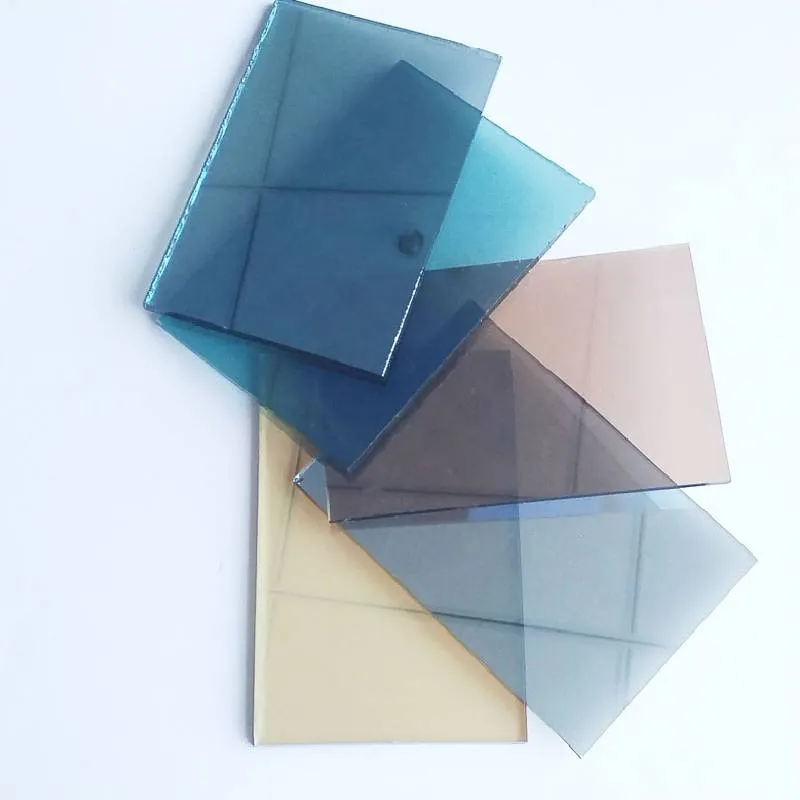Laminated Glass and Tempered Glass A Comprehensive Overview
Glass has become an integral part of modern architecture and design, providing aesthetic appeal, natural lighting, and structural advantages. Among the various types of glass used today, laminated glass and tempered glass are two of the most popular choices, each boasting unique characteristics suited to different applications. Understanding the distinct properties of these two types of glass can help architects, designers, and consumers make informed decisions for their specific needs.
Laminated Glass
Laminated glass is made by sandwiching a layer of polymer interlayer, typically polyvinyl butyral (PVB), between two or more layers of glass. This process is accomplished through heat and pressure, allowing the layers to bond together firmly. The primary advantage of laminated glass is its enhanced safety features. In the event of breakage, the polymer interlayer holds the glass pieces in place, reducing the risk of injury from flying shards. Therefore, laminated glass is often used in applications where safety is a primary concern, such as in car windshields, skylights, and in buildings where large glass panels are used.
Another significant advantage of laminated glass is its acoustic insulation properties. The PVB layer acts as a sound barrier, significantly reducing noise transmission, making it an excellent choice for buildings in urban environments. Additionally, laminated glass offers UV protection. The PVB interlayer blocks up to 99% of harmful ultraviolet rays, helping to protect furniture, flooring, and artworks from fading over time. These combined benefits make laminated glass a versatile option for many architectural and automotive applications.
Tempered Glass
Tempered glass, also known as toughened glass, is produced through a process of extreme heating and rapid cooling. This method increases the glass's strength compared to regular glass, making it much more resistant to impact and thermal stress. As a result, tempered glass is often used in high-traffic areas and locations where safety and strength are paramount, such as shower doors, glass railings, and exterior windows.
laminated glass and tempered glass
One of the key benefits of tempered glass is its ability to break into small, blunt pieces rather than sharp shards, which minimizes the risk of injury in the event of breakage. Moreover, tempered glass can withstand considerable pressure, making it an ideal choice for areas exposed to harsh weather conditions or thermal fluctuations, such as in high-rise buildings and facades.
In terms of design versatility, tempered glass can be produced in various thicknesses and can be treated with different finishes, making it suitable for a broad range of applications from commercial to residential contexts. However, unlike laminated glass, tempered glass does not offer substantial sound insulation or UV protection.
Comparing Laminated and Tempered Glass
When choosing between laminated glass and tempered glass, it’s essential to consider the specific requirements of the project. Laminated glass is favored for applications where safety, sound insulation, and UV protection are critical. It is especially beneficial in environments that necessitate protection from weather elements and noise pollution.
On the other hand, tempered glass is the go-to option for situations demanding higher strength and resistance to impact. Its ability to withstand thermal stress makes it suitable for areas where temperature fluctuations are common.
Conclusion
In summary, both laminated glass and tempered glass have their unique strengths and applications in modern design and architecture. Laminated glass excels in safety and sound insulation, making it suitable for many residential and commercial uses. In contrast, tempered glass is characterized by its high strength and thermal resistance, ideal for areas exposed to high impact and temperature changes. By understanding the differences between these materials, architects, builders, and consumers can make informed choices that best suit their specific needs, ensuring safety, functionality, and aesthetic appeal in their projects.
 Afrikaans
Afrikaans  Albanian
Albanian  Amharic
Amharic  Arabic
Arabic  Armenian
Armenian  Azerbaijani
Azerbaijani  Basque
Basque  Belarusian
Belarusian  Bengali
Bengali  Bosnian
Bosnian  Bulgarian
Bulgarian  Catalan
Catalan  Cebuano
Cebuano  Corsican
Corsican  Croatian
Croatian  Czech
Czech  Danish
Danish  Dutch
Dutch  English
English  Esperanto
Esperanto  Estonian
Estonian  Finnish
Finnish  French
French  Frisian
Frisian  Galician
Galician  Georgian
Georgian  German
German  Greek
Greek  Gujarati
Gujarati  Haitian Creole
Haitian Creole  hausa
hausa  hawaiian
hawaiian  Hebrew
Hebrew  Hindi
Hindi  Miao
Miao  Hungarian
Hungarian  Icelandic
Icelandic  igbo
igbo  Indonesian
Indonesian  irish
irish  Italian
Italian  Japanese
Japanese  Javanese
Javanese  Kannada
Kannada  kazakh
kazakh  Khmer
Khmer  Rwandese
Rwandese  Korean
Korean  Kurdish
Kurdish  Kyrgyz
Kyrgyz  Lao
Lao  Latin
Latin  Latvian
Latvian  Lithuanian
Lithuanian  Luxembourgish
Luxembourgish  Macedonian
Macedonian  Malgashi
Malgashi  Malay
Malay  Malayalam
Malayalam  Maltese
Maltese  Maori
Maori  Marathi
Marathi  Mongolian
Mongolian  Myanmar
Myanmar  Nepali
Nepali  Norwegian
Norwegian  Norwegian
Norwegian  Occitan
Occitan  Pashto
Pashto  Persian
Persian  Polish
Polish  Portuguese
Portuguese  Punjabi
Punjabi  Romanian
Romanian  Russian
Russian  Samoan
Samoan  Scottish Gaelic
Scottish Gaelic  Serbian
Serbian  Sesotho
Sesotho  Shona
Shona  Sindhi
Sindhi  Sinhala
Sinhala  Slovak
Slovak  Slovenian
Slovenian  Somali
Somali  Spanish
Spanish  Sundanese
Sundanese  Swahili
Swahili  Swedish
Swedish  Tagalog
Tagalog  Tajik
Tajik  Tamil
Tamil  Tatar
Tatar  Telugu
Telugu  Thai
Thai  Turkish
Turkish  Turkmen
Turkmen  Ukrainian
Ukrainian  Urdu
Urdu  Uighur
Uighur  Uzbek
Uzbek  Vietnamese
Vietnamese  Welsh
Welsh  Bantu
Bantu  Yiddish
Yiddish  Yoruba
Yoruba  Zulu
Zulu 

